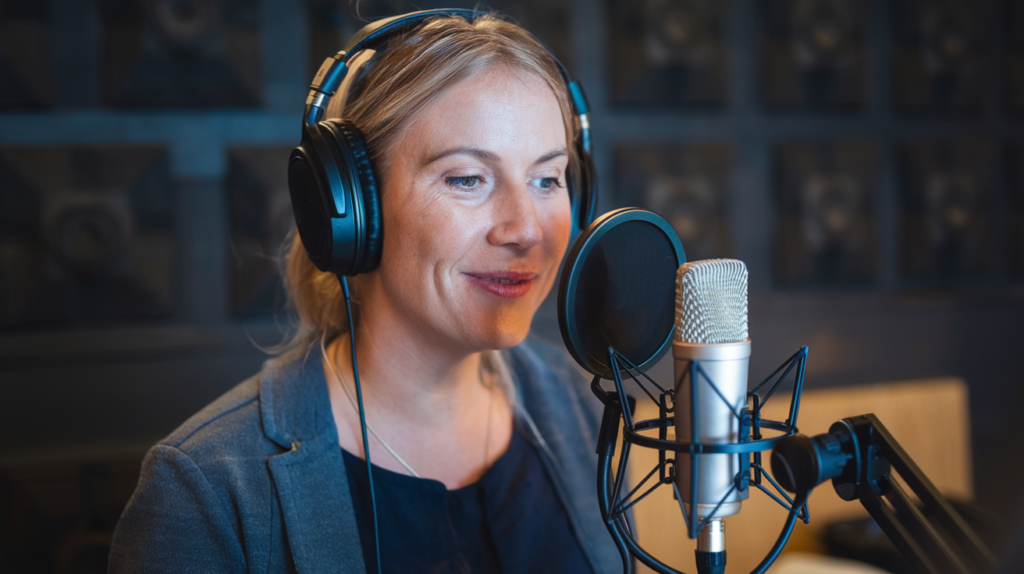Key Takeaways
- Māori Cultural Significance: Māori culture is deeply rooted in New Zealand’s identity, with language and traditions shaping contemporary media narratives globally.
- Te Reo Māori in Media: The incorporation of Te Reo Māori enhances storytelling by offering authentic representations and diverse perspectives that resonate with audiences.
- Impact of Colonization: Historical suppression of Te Reo Māori led to a decline in fluency, but revitalization efforts are now celebrating the language’s resurgence in modern media.
- Role of Storytelling: Traditional Māori narratives emphasize themes like community and spirituality, enriching content and fostering emotional engagement among viewers.
- Contemporary Examples: Music and social media serve as vital platforms for promoting Te Reo Māori, connecting younger generations to their cultural heritage through accessible content.
- Challenges and Opportunities: While there are obstacles in preserving the language within media, innovative approaches can elevate Māori voices and enhance cultural understanding.
Have you ever wondered how Maori culture shapes the language we hear in media today? The vibrant influence of Maori traditions extends far beyond New Zealand, weaving its way into global conversations. As more creators embrace this rich heritage, they’re not just telling stories; they’re enriching our understanding of identity and connection.
In an age where representation matters more than ever, the impact of Maori cultural elements on language in media is profound. From film scripts to social media posts, the infusion of Te Reo Māori and traditional concepts invites audiences to engage with new perspectives. Discover how these influences are transforming narratives and fostering a deeper appreciation for diversity in storytelling.
Overview of Māori Culture
Māori culture is rich and multifaceted, deeply rooted in the history and identity of New Zealand’s indigenous people. It embodies unique customs, traditions, language, and art forms that reflect a profound connection to land and ancestry. The Te Reo Māori language serves as a vital component of this cultural framework, encapsulating values and beliefs intrinsic to the Māori worldview.
In media contexts, Māori culture plays an essential role in storytelling. Incorporating elements like traditional narratives enriches content by providing diverse perspectives. For instance, filmmakers often draw on Māori myths or legends when crafting their stories, offering audiences a glimpse into the spiritual relationships between people and nature.
Cultural practices such as haka—a ceremonial dance—also find their way into various media formats. This powerful expression resonates beyond performance; it symbolizes unity and strength while sparking interest in its significance among viewers unfamiliar with its origins.
The importance of representation cannot be overstated. When creators include authentic Māori voices in their projects—whether through voiceovers or other artistic forms—they promote understanding and respect for this vibrant culture. Engaging with skilled voice actors familiar with Te Reo Māori ensures accuracy while honoring the nuances of these narratives.
Ultimately, engaging with Māori culture enhances media output significantly. Embracing these elements fosters awareness about indigenous identities while transforming storytelling into a more inclusive experience for all audiences.
Historical Context of Māori Language
Māori language, or Te Reo Māori, carries a deep historical significance within New Zealand’s culture. Originating from the Polynesian settlers who arrived in Aotearoa over a thousand years ago, it reflects the rich traditions and values of the Māori people.
The Evolution of Te Reo Māori
Te Reo Māori has undergone significant changes since its inception. Initially spoken in oral form, it evolved alongside the social and cultural shifts experienced by the Māori community. The introduction of European settlers in the 18th century brought new influences that shaped language usage. Despite these transformations, many core elements remain intact, preserving essential aspects of identity and heritage.
In contemporary media contexts, voiceover talent often employs Te Reo to convey authentic narratives. Voice artists capture distinct pronunciations and expressions linked to specific iwi (tribes), enhancing storytelling through genuine representation.
Impact of Colonization on Māori Language
Colonization had a profound impact on Te Reo Māori. English became dominant due to governmental policies and educational systems that marginalized indigenous languages. This suppression led to a decline in fluency among younger generations for decades.
However, recent revitalization efforts have emerged as communities recognize the importance of reclaiming their linguistic heritage. Today’s media landscape celebrates this resurgence by integrating Te Reo into films, documentaries, and other formats—often featuring skilled voice actors who deliver powerful performances that resonate with audiences.
By embracing both historical context and modern adaptations of the language, creators foster deeper connections between cultures while promoting awareness about New Zealand’s indigenous identity.
Māori Cultural Influence on Language in Media
Māori culture significantly shapes contemporary media language, enhancing narratives and fostering connections. Its influence extends beyond New Zealand, enriching storytelling worldwide.
The Role of Māori Storytelling
Māori storytelling plays a vital role in preserving cultural identity. Through traditional narratives, filmmakers convey values and beliefs that resonate deeply with audiences. These stories often explore themes of community, spirituality, and the relationship between people and nature. By integrating these elements into modern media, creators provide diverse perspectives that challenge mainstream narratives. This authenticity fosters emotional engagement and enriches the viewer’s experience.
Representation of Māori Language in Film and Television
The representation of Te Reo Māori in film and television showcases its beauty while promoting cultural understanding. Many productions feature talented voice actors who bring characters to life through their performances in Te Reo. This inclusion not only resonates with Māori audiences but also educates non-Māori viewers about the language’s significance.
Using Te Reo enhances storytelling by adding depth, making narratives more relatable for those familiar with the language while intriguing for others. As more creators embrace this linguistic diversity, they contribute to a richer media landscape that reflects New Zealand’s vibrant heritage and promotes broader awareness of indigenous identities.
Contemporary Examples
Māori cultural influence in media is evident across various platforms today, showcasing the integration of Te Reo Māori and traditional narratives. This blend enriches storytelling and fosters a deeper understanding of Māori identity.
Māori Language in Music
Music serves as a powerful medium for expressing cultural values. Artists incorporate Te Reo Māori into their lyrics, bringing traditional songs to contemporary audiences. For instance, tracks often feature themes rooted in Māori history and spirituality, connecting listeners with their heritage. Collaborations between musicians highlight the importance of this language, creating an authentic representation that resonates with both Māori and non-Māori fans alike.
Social Media and Māori Language Usage
Social media platforms are vital for promoting Te Reo Māori among younger generations. Users share content that includes everyday phrases or culturally significant terms, making the language more accessible. Engaging posts often spark conversations around cultural pride and identity, encouraging others to learn about these rich traditions. As you scroll through your feed, you might notice hashtags celebrating linguistic diversity or videos featuring voice actors using Te Reo in creative ways—these efforts amplify the reach of the language beyond traditional boundaries.
By embracing these contemporary examples of Māori influence on media language, creators contribute to a vibrant narrative landscape that honors indigenous voices while educating wider audiences about New Zealand’s diverse heritage.
Challenges and Opportunities
Māori cultural influence on language in media presents both challenges and opportunities. Navigating these aspects can enhance representation while fostering respect for Māori heritage.
Preserving Māori Language in Media
Preserving Te Reo Māori in media encounters significant obstacles, such as limited resources and funding for authentic representation. Many projects rely on skilled voice actors who understand the nuances of the language and culture. Producers often face challenges finding qualified voiceover talent to ensure authenticity. However, this necessity also creates an opportunity to elevate Māori voices within the industry, showcasing their unique perspectives through various mediums. Engaging with local communities fosters trust and encourages collaboration, enriching storytelling while preserving linguistic integrity.
The Future of Māori Language in the Digital Age
The digital age offers exciting prospects for Te Reo Māori’s future in media. Social media platforms allow younger generations to engage with cultural content actively, promoting language use among diverse audiences. Innovative technologies enable creators to share traditional narratives through modern formats like podcasts or animated series, making them accessible worldwide. As you explore these avenues, consider how integrating voiceover artists who are fluent in Te Reo can bring authenticity to your projects. The growing demand for inclusive representation means that embracing this cultural richness not only benefits your work but also contributes positively to broader societal understanding of indigenous identities.
Conclusion
Embracing Māori cultural influence in media language enriches storytelling and fosters a deeper understanding of identity. By integrating Te Reo Māori and traditional narratives, creators not only celebrate this vibrant culture but also promote diversity and inclusion across the media landscape.
As you witness more authentic representations in film music and social media, consider how these elements reshape perceptions of indigenous identities. The future looks promising as digital platforms offer new avenues for sharing cultural stories while revitalizing the language for younger generations.
This ongoing journey highlights the importance of collaboration respect and genuine representation ensuring that Māori voices remain at the forefront of contemporary narrative practices.
Frequently Asked Questions
What is the main focus of the article on Māori culture and media?
The article explores how Māori culture significantly influences contemporary media language, emphasizing its integration into various platforms. It highlights the importance of representation and authentic Māori voices in storytelling, enriching narratives and enhancing cultural understanding.
How does Te Reo Māori contribute to storytelling in media?
Te Reo Māori encapsulates values and beliefs essential to the Māori worldview, playing a crucial role in storytelling. By incorporating traditional narratives, creators offer diverse perspectives that reflect spiritual relationships between people and nature.
Why is representation important in media regarding Māori culture?
Representation is vital as it promotes understanding and respect for Māori culture. Including authentic Māori voices enhances storytelling quality while fostering awareness about indigenous identities, ultimately contributing to a more inclusive media landscape.
What challenges does Te Reo Māori face today?
Te Reo Māori struggles with limited resources and declining fluency among younger generations due to historical colonization. However, revitalization efforts are underway, focusing on reclaiming linguistic heritage through community engagement and education.
How is social media helping promote Te Reo Māori?
Social media serves as a platform for sharing culturally significant content that encourages conversations around cultural pride and identity. It allows younger generations to engage with their heritage actively, promoting the use of Te Reo among new audiences.
What role does music play in expressing Maori cultural values?
Music acts as a powerful medium for artists to incorporate Te Reo into their lyrics, connecting listeners deeply with their heritage. This form of expression helps preserve cultural values while reaching wider audiences through contemporary formats.
Can you provide examples of how traditional narratives are integrated into modern media?
Contemporary films, television shows, and music often weave traditional narratives into their storylines or lyrics. This integration not only enriches storytelling but also showcases the beauty of Te Reo Maori while educating both Maori and non-Maori viewers about its significance.







